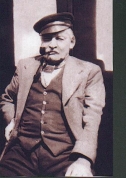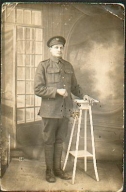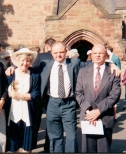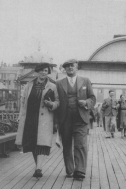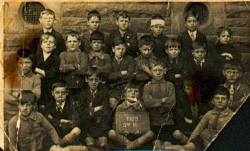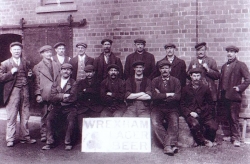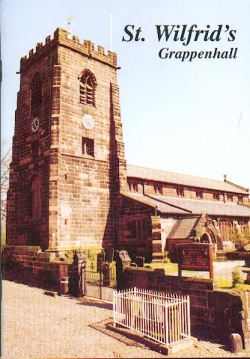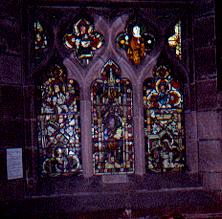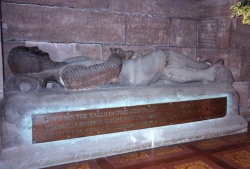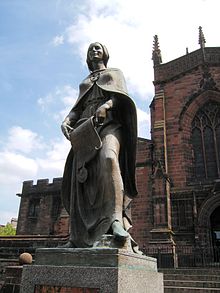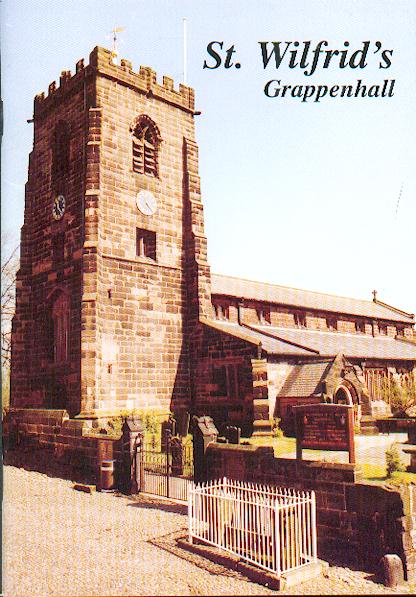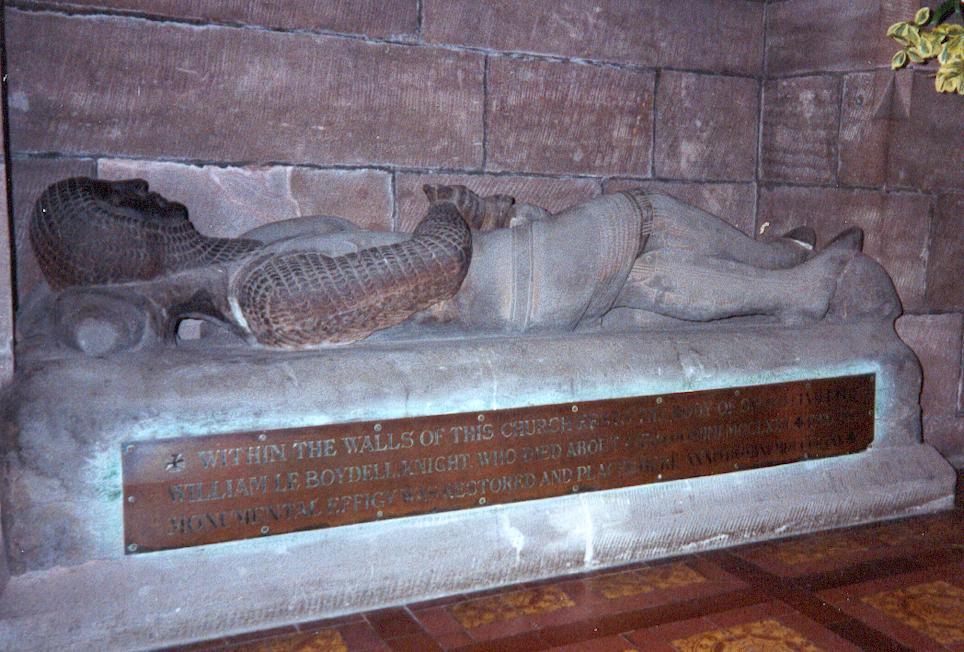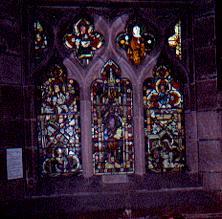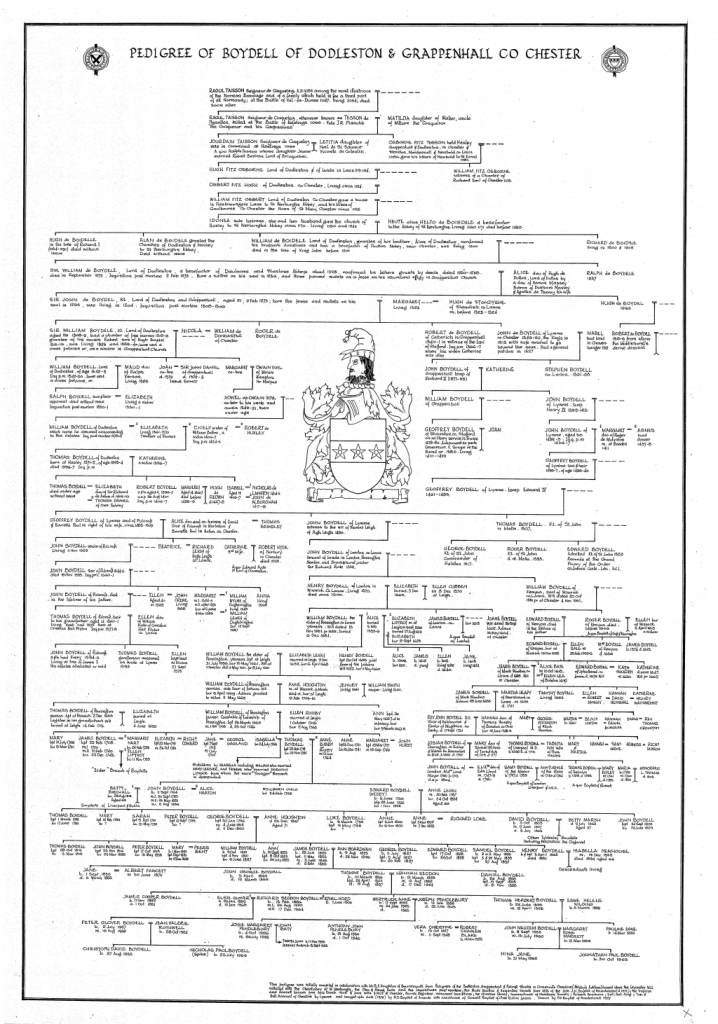Link to Grappenhall - A UK Village.
The Following Information was taken from from the Parish Church of St Wilfrid, Grappenhall Literature and handouts. (Mitchell. T, 1983 -1985)
The history of St Wilfrids goes way back into the past. Its beginnings were closely associated with the Boydell family. The first church to be built on this site dates to the early 12th century and was completed c1120. Although no records of an earlier building the font dates from Saxon times, so it is possible that worship prior to this date was taking place. The church was rebuilt in the 16th century and the south aisle was added. The floor in the original church was probably of hard earth, and a ledge ran around the walls where the weak and the aged could sit (hence the saying 'The weak ones go to the wall')
The first major alteration to the church was in 1334 and was the chantry on the south wall. This was built by Sir William Boydell, member of a distinguished local family, and his wife Nicola. There exists the record of an oath sworn by Sir William's son in 1334 regarding the chantry, which stipulates that he should 'find an honest chaplain to attend to its proper conduct. Unfortunately the chantry no longer exists but its position can still be traced by an inset below the present south wall.
In c1525 work was started on extensions to the church which resulted in it being almost entirely rebuilt. A chancel and tower were added (Unfortunately the tower is requiring restoration and a fund has been instigated)which was completed in 1539 - the date has been carved on one of the pillars near the south porch.
In 1641 the south porch was added and the west wall was strengthened. The initials 'JR' cut into the stone in this wall by the arch are those of John Rycroft, who was churchwarden etween 1617 and 1641. In 1833 the roof was raised and the clerestory was added. The south aisle was extended eastwards in 1850 and the vestry built the following year. Finally in 1873 the whole church was restored under the direction of the rector, Reverand Thomas greenall.
The Boydell Effigy
On the north side of the sanctuary lies a recumbant figure carved in stone and the plinth has been fixed with a brass plate with the following inscription: 'Within the walls of this church rests the body of Sir William Fitz William le Boydell who died about Anno Domini MCCLXXV. This, his monumantal effigy was restored and placed here Anno Domini MDCCCLXXV'.
He has a smiling face and is dressed in chain armour similar to that worn by a 13th century Knight. There are 3 stars on his breastplate and he seems ready to draw his sword. His crossed feet rest on a stone carving of a dog. The two dates inscribed in Roman numerals included in the inscription tell us that William died about 1275 AD and the effigy was rstored and placed in the sanctuary in 1875 AD.
Sir William Fitz William le Boydell was born 1230 AD and married Alice, daughter of Hugh of Dutton and by her he had a son, Sir John Boydell, who succeded his father in the Grappenhall and Dodleston (Chester) estates. He had two other sons one of which William it is thought built the chantry chapel which has now been absorbed into the south aisle of the church.
The Boydell Window
On January 19th 1334, William Boydell in Chester took an oath to find an honest chaplain to celebrate forever the divine mysteries for the souls of William Boydell my father, and Nicholoa, my mother, and for the souls of all the faithful departed in the chaple of Gropenhale built by the aforesaid William, my father. This charter implies the existence of a chantry chapel which had been built by the year 1334 AD. The chapel known as the Boydell chapel, was still in being in the 16th century but has now been incorporated into the south aisle of the church. However the Boydell window is still in existence (see above).
It would appear that this window was made up from the most beautiful remains of the glass saved from the chantry chapel, it was re-leaded in 1964, having been placed in its present position in 1850, the glass itself dates from 1334. Grappenhall has always been noted for its stained glass but the Boydell medieval window is extremely precious. It is internationally known and is often photographed by experts in the field of historic church art. It has proved difficult to insure as the value of the window is worth more than that of the other windows in total. It was not able to value because of its uniqueness, rarity and age. The outside of the window has been protected with toughened plate glass.
|
